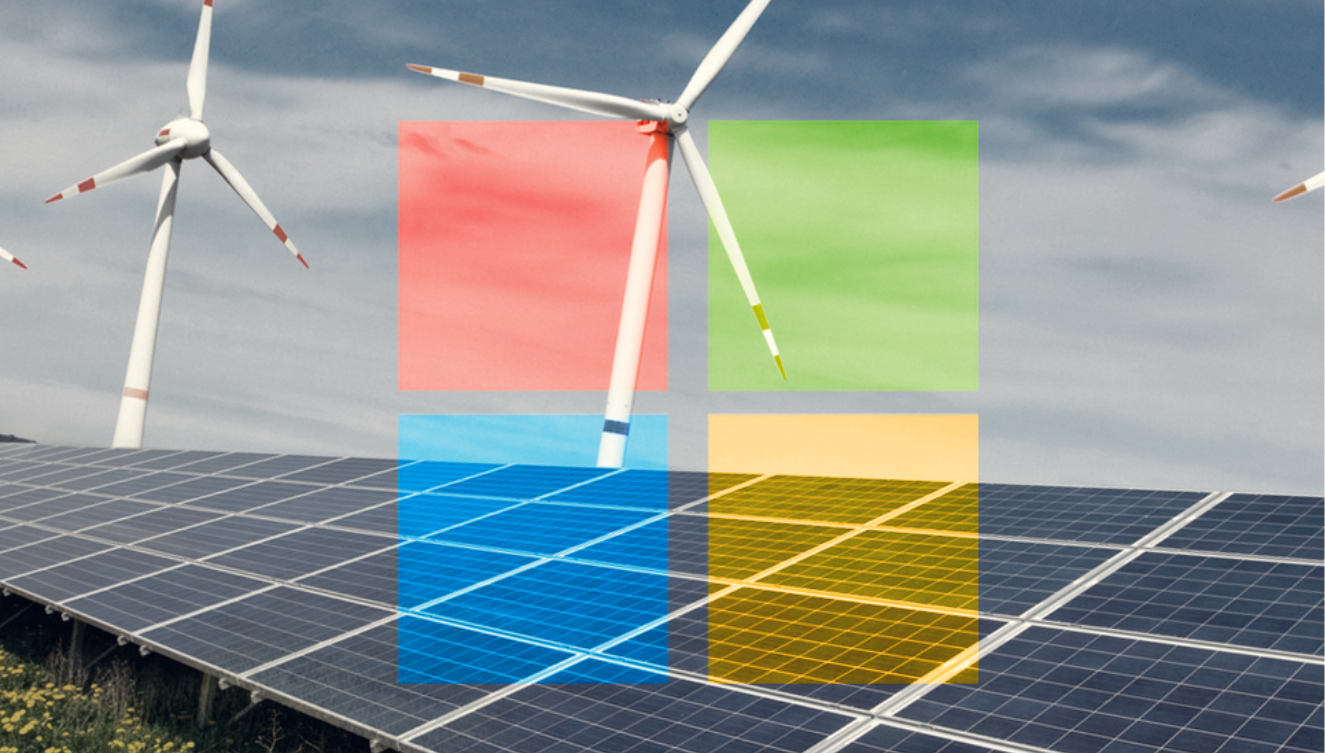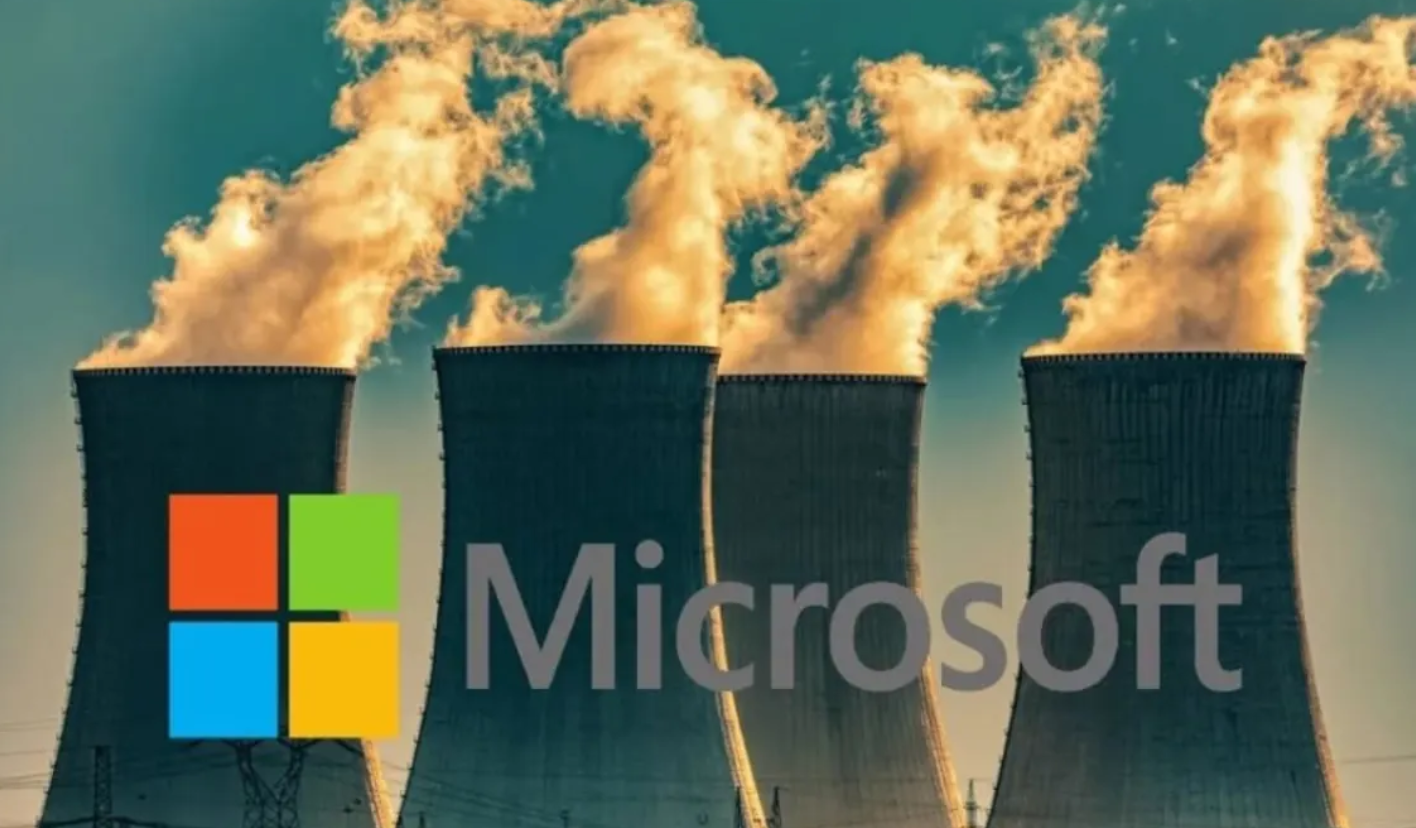Microsoft has unveiled an ambitious project that aims to utilize small nuclear reactors as a power source for AI training. This innovative plan signifies a quantum leap in the tech giant’s pursuit of sustainable and efficient energy sources. Artificial Intelligence training is notorious for its intense energy requirements, hence the need for a robust and reliable power supply. In response, Microsoft is embracing nuclear energy, renowned for its high energy output and low greenhouse gas emissions.
The company’s audacious proposal involves the use of small modular reactors (SMRs), which are compact and capable of generating a substantial amount of energy without the risk of catastrophic meltdowns typical of traditional nuclear reactors. Microsoft believes that these SMRs can provide the vast amounts of power required for AI training in a more sustainable and controlled manner.
It’s important to note that the tech titan’s plan is not just about energy output, but it also emphasizes on energy storage. By harnessing nuclear energy, Microsoft will be able to store excess power generated during low demand periods, which can then be used when demand spikes. This approach aligns perfectly with the erratic nature of AI training, where energy requirements can fluctuate significantly.
While the idea of using nuclear energy for AI training may raise eyebrows, Microsoft has gone to great lengths to ensure safety and efficiency. The company has partnered with TerraPower and Pacific Northwest National Laboratory (PNNL) in a collaborative effort to develop and deploy advanced nuclear technology. Their mutual objective is to create a blueprint for a safe, reliable, and zero-carbon energy source that can meet the mounting demand brought about by AI training.
Microsoft’s plan also has significant environmental implications. The use of nuclear energy for AI training could drastically reduce the tech industry’s carbon footprint. It’s a timely and strategic move, especially at a time when the world grapples with the adverse effects of climate change. Microsoft’s commitment to sustainability is evident in this ambitious venture, reaffirming the company’s position as a leading advocate for environmental consciousness within the tech industry.
However, the road to achieving this ambitious goal is not without challenges. There are numerous hurdles to overcome, including public skepticism around nuclear energy, the high costs associated with developing and maintaining SMRs, and the complex regulatory landscape. Despite these obstacles, Microsoft remains undeterred in its quest to bring this groundbreaking initiative to fruition.
In conclusion, Microsoft’s plan of using small nuclear reactors to power AI training represents a bold step towards a sustainable future. The tech giant’s innovative approach could revolutionize the way we power AI, all while mitigating the environmental impact of the technology industry. It’s a testament to Microsoft’s forward-thinking mindset and unwavering commitment to sustainability, proving once again their position at the forefront of technological advancement.

The Scale of Microsoft’s Energy Demands
Microsoft, a global technology giant, has a vast energy demand that reflects its extensive operations. The scale of the company’s energy needs is immense, considering the numerous data centers, offices, and retail outlets it maintains worldwide. Serving millions of customers across various platforms, from cloud computing to gaming, requires an enormous amount of power. In fact, in 2019, Microsoft used roughly 7.5 million megawatt-hours of energy — a figure comparable to the consumption of entire countries.
The company’s digital services, including its popular Azure cloud platform, require a constant supply of energy to function effectively. Consequently, Microsoft has a significant environmental footprint due to the enormous amounts of electricity it needs to power its operations, much of which is still derived from fossil fuels.
However, Microsoft has shown a strong commitment to reducing its carbon footprint and transitioning to renewable energy sources. The company aims to be carbon negative by 2030 and has made significant investments in solar and wind energy projects to meet its sustainability goals. In addition, it has set out to build more energy-efficient data centers and has pioneered the use of underwater data centers, which can leverage the cooling effects of the ocean to reduce energy consumption.
Despite these efforts, the scale of Microsoft’s energy demands continues to grow as the company expands its global reach and the demand for its services increases. This situation poses a challenge for Microsoft, as it seeks to balance its operational needs with its sustainability objectives.
In conclusion, Microsoft’s energy demands are substantial and correspond to the size and scope of the company’s operations. The company’s efforts to transition to renewable energy and reduce its environmental footprint underscore the complexity of managing such immense energy needs in a sustainable manner.
Embracing Nuclear Energy
Embracing nuclear energy is a topic that has been met with much debate and discussion. Nuclear power, being a highly efficient and abundant source of energy, could play a significant role in meeting the increasing global energy demand while also addressing environmental concerns related to carbon emissions. Despite its controversial nature due to potential hazards and waste disposal issues, nuclear energy is viewed by many as an essential tool in combating climate change.
The density of nuclear power is unparalleled, yielding significantly more energy per unit of fuel compared to fossil fuels, making it a more space-efficient solution. Moreover, nuclear power plants are capable of operating continuously, providing a constant and reliable source of energy. This could prove vital in reducing reliance on fossil fuels and facilitating a transition towards a more sustainable energy landscape.
However, embracing nuclear energy requires a comprehensive understanding of its implications and challenges. One primary concern is the potential for catastrophic accidents, such as those witnessed at Chernobyl and Fukushima. These incidents serve as stark reminders of the risks involved in nuclear power generation. However, advancements in technology and improved safety measures have significantly reduced these risks.
The issue of nuclear waste is another significant challenge. Although the volume of waste produced is relatively small, it remains radioactive for thousands of years and requires careful management and disposal. New technologies and methods are being explored to mitigate this issue, including recycling of nuclear waste and development of safer, more efficient reactor designs.
Finally, the economic aspect of nuclear energy cannot be ignored. While the initial costs of setting up a nuclear power plant can be high, the long-term benefits in terms of energy production efficiency and environmental impact could make it a worthwhile investment.
In conclusion, while embracing nuclear energy comes with its own set of challenges, its potential benefits in terms of efficiency and environmental sustainability make it an option worth considering in the quest for sustainable energy solutions. However, this necessitates a balanced approach, taking into consideration all aspects including safety, waste management, and economics.

Exploring Compact and Modular Reactors
Compact and modular reactors represent a significant shift in the trajectory of nuclear power generation. Rather than the vast, sprawling facilities of the past, these innovative designs focus on smaller scale, more efficient models. They are light and small enough to transport to remote locations where the construction of a traditional nuclear power plant may not be feasible, thereby expanding the reach of nuclear power. These reactors are often designed to be self-contained units, which can drastically reduce the potential for environmental contamination.
Furthermore, the modular aspect of these reactors allows for scalability and flexibility. Instead of constructing a single, large-scale reactor, multiple smaller reactors can be combined to match the required energy output. This modular approach not only reduces initial capital investment but also minimizes the risk of overcapacity.
Compact and modular reactors also promise enhanced safety features. Many of these designs incorporate passive safety systems, which rely on natural forces like gravity and convection, rather than mechanical or electronic components, to maintain safe operating conditions. This reduces the likelihood of technical failures leading to catastrophic events.
Moreover, the shift towards compact and modular reactors could potentially revitalize the nuclear industry. The reduced cost and increased flexibility of these reactors make them a more attractive option for countries seeking to diversify their energy mix and reduce their carbon emissions.
However, despite these promising features, compact and modular reactors are not without challenges. Concerns about nuclear proliferation and waste management remain. Furthermore, the relatively untested nature of these designs necessitates thorough and rigorous testing before widespread adoption. Nonetheless, the development and refinement of compact and modular reactors represent an exciting frontier in the ongoing evolution of nuclear power generation.
